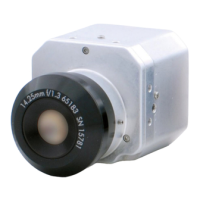4
Chapter 1
locations on the box lid can be monitored
with an IR camera. Moreover, the image
can be digitized in a way that allows this
information to be stored in a statistical
quality control database for trend analysis
and equipment monitoring as shown in
Figure 3.
This is an example of using dierential
temperature as a proxy for another
variable. In this case, temperature
replaces mechanical methods of
inspection/testing.
Summary
The automation examples presented
in this chapter have barely scratched
the surface of the application space
that smart IR cameras can serve. In
the following chapters, more detailed
examples will be presented along
with practical information on the
implementation of automated systems
that exploit the advantages of IR cameras.
These chapters are organized according
to the major types of applications that
typically use IR cameras:
Remote thermographic monitoring•
Non-contact temperature •
measurement for automated processes
Combining IR machine vision with •
temperature measurement
Real-time control and monitoring – •
issues and answers

